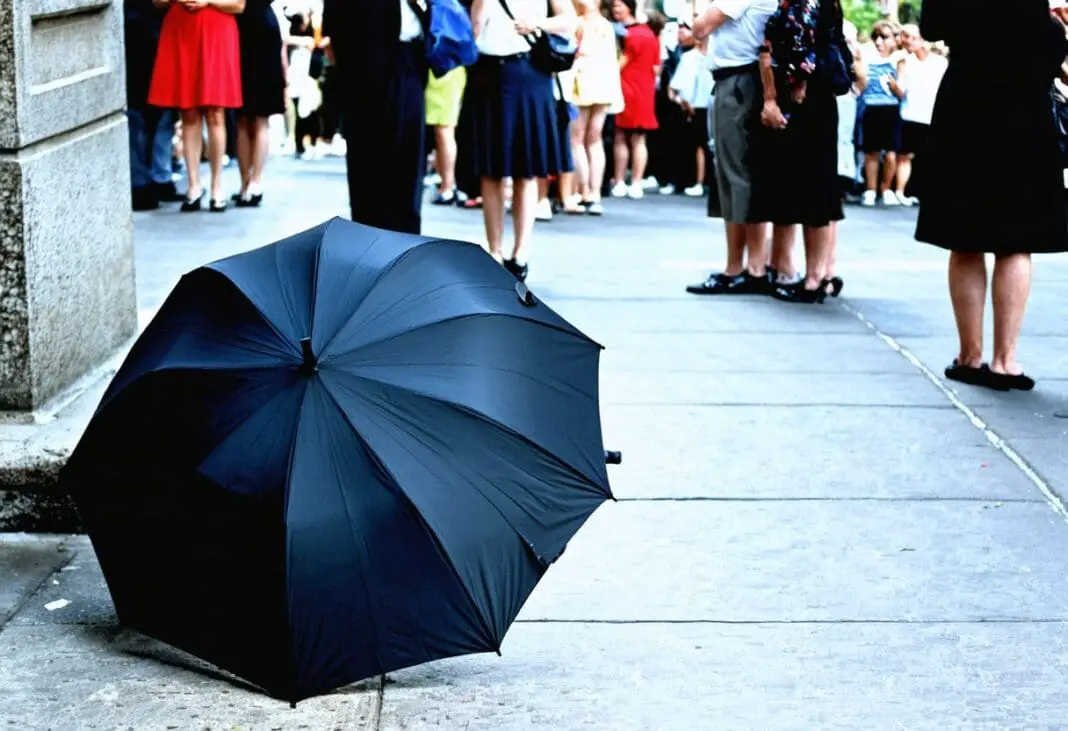Most people know the basic facts about President Kennedy’s assassination in Dallas on November 22, 1963. But what if the most bizarre details are the ones that never made it into your history textbook? From mysterious men with umbrellas on sunny days to presidential limousines that stayed in service for decades after tragedy struck, the JFK assassination contains some truly mind-bending oddities. These strange facts reveal just how much weirdness surrounds one of America’s darkest days.
Kennedy’s death car was actually a rental with massive upgrades
The iconic Lincoln Continental that carried President Kennedy to his death wasn’t some specially-built presidential fortress. It started as a regular 1961 Lincoln Continental four-door convertible with a retail price of $7,347 that rolled off Ford’s assembly line in Wixom, Michigan. The White House didn’t even buy the car outright – they leased it from Ford for just $500 per year, which seems almost comically cheap for a presidential vehicle.
What wasn’t cheap were the modifications. The government spent $200,000 transforming this ordinary Lincoln Continental into a presidential limousine through elite custom coachbuilder Hess and Eisenhardt in Cincinnati. The same company worked on vehicles for the Queen of England, so they knew their way around VIP transportation. The car received Secret Service codenames SS-100-X and X-100, plus a 1962 grille to make it look completely up-to-date for its high-profile passenger.
The limousine had bizarre features that seem pointless now
This wasn’t your typical stretch limo with a mini-bar and disco lights. Kennedy’s Lincoln had some truly peculiar modifications that would make today’s Secret Service agents cringe. The car featured a six-piece roof system made mostly of clear plastic panels that stored in the trunk when not in use. Even stranger, the rear seat could hydraulically rise more than 10 inches to give crowds a better view of the president – essentially turning him into a moving target.
The vehicle also packed two radio telephones that worked like walkie-talkies connected to phone handsets. Most dramatically, the car had been cut in half and stretched by 3.5 feet to create more passenger space and accommodate a middle row of forward-facing jump seats. These modifications prioritized visibility and comfort over protection – a decision that would prove tragically misguided in Dallas.
The bubble top wouldn’t have saved Kennedy anyway
Many people wonder whether Kennedy might have survived if the limousine’s clear plastic “bubble top” had been installed that sunny Dallas morning. The weather was a pleasant 68 degrees with clear skies, so the roof panels stayed packed away in the trunk. But according to Gary Mack, the late curator of Dallas’ Sixth Floor Museum at Dealey Plaza, using the bubble top wouldn’t have changed history one bit.
The plastic panels weren’t bulletproof – they were just designed to keep rain and wind off the passengers during parades. In fact, the entire vehicle lacked any protective armor whatsoever. Despite all its expensive modifications and high-tech features, Mack described Kennedy’s limousine as essentially just an “expensive, fancy limousine” rather than the armored fortress you might expect. The bubble top was more about comfort than security, making it useless against the type of attack that claimed the president’s life.
A man with an umbrella stood in perfect weather
On that clear, sunny day in Dallas, with temperatures reaching 68 degrees Fahrenheit, one figure in the crowd stood out for all the wrong reasons. A man held an open black umbrella while standing just yards away from the presidential motorcade – a bizarre sight that violated Secret Service security protocols. Even more unsettling, this “Umbrella Man” positioned himself precisely where shots would soon rain down on Kennedy’s limousine, yet federal authorities didn’t track him down for 15 years.
Conspiracy theorists went wild with speculation. Some suggested the umbrella concealed a dart gun, pointing to CIA programs that developed poison dart weapons disguised as everyday objects. Weapons designer Charles Senseney had testified that firing projectiles from umbrellas was technically possible in 1963. The mysterious figure pumped his umbrella in the air as shots rang out, while another man nearby waved his right arm frantically. Their strange behavior at the exact moment of the assassination fueled decades of theories about signals to hidden conspirators.
Umbrella Man’s explanation was even weirder than the theories
In 1978, Louie Steven Witt finally stepped forward to identify himself as the infamous Umbrella Man. His explanation to the House Select Committee on Assassinations was so bizarre that it almost defied belief. Witt claimed he brought the umbrella as a form of visual protest directed not at Kennedy himself, but at the president’s father, Joseph P. Kennedy Sr. The umbrella was meant to reference British Prime Minister Neville Chamberlain’s policy of appeasement toward Hitler in the 1930s, which the elder Kennedy had supported.
Witt even brought his “stupid umbrella” to the congressional hearing, as he called it. His convoluted protest involved using the umbrella as a silent heckle to remind JFK of his father’s controversial diplomatic stance decades earlier. When asked if he had anything to add, Witt delivered one of the most memorable quotes in assassination history: “If the Guinness Book of World Records had a category for people doing the wrong thing at the wrong time in the wrong place, I would be No. 1 in that position with not even a close runner-up.”
The death car returned to service within months
What happened to Kennedy’s blood-stained limousine after that tragic day seems almost unthinkable by today’s standards. Rather than retiring the vehicle out of respect or preserving it as evidence, the government immediately put it back into presidential service. The project, grimly dubbed “The Quick Fix,” aimed to get President Lyndon Johnson a working limousine as quickly as possible. Building a completely new presidential vehicle would take four years, and Johnson needed secure transportation immediately.
The rebuilt Lincoln received nearly half a million dollars in upgrades, including actual bulletproof armor this time around. Engineers installed a new high-compression V-8 engine, increasing power by 17% to handle the additional weight. The fortified vehicle now tipped the scales at 9,800 pounds, up from 7,822 pounds originally. To keep passengers comfortable in the heavy, sealed environment, builders installed what they called “the largest passenger-car air conditioning unit ever built,” capable of cooling an average house.
Someone tried to clean the crime scene at the hospital
While Kennedy fought for his life at Parkland Hospital, something strange was happening outside with his limousine. Hospital staff reported seeing a mysterious man in a suit who appeared in the emergency area asking for a bucket of water and some towels. The implication was chilling – someone wanted to clean out the presidential limousine while it sat in the hospital parking lot, potentially destroying crucial evidence from the crime scene.
This unidentified man was never found or questioned, but photographers documented a bucket being carried toward the emergency entrance from the left rear door of Kennedy’s limo. However, FBI photographs taken after the car was flown back to Washington show the backseat still contained evidence of the attack. Either the mysterious cleaner failed in his mission, or perhaps only the driver’s area was wiped down. The identity of this person and their motives remain unknown, adding another layer of mystery to an already complicated crime scene.
Critical radio recordings vanished without explanation
Every vehicle in Kennedy’s motorcade that day was connected to a sophisticated radio network monitored by the Secret Service from a room at the Adolphus Hotel in Dallas. These radio transmissions were also fed to Air Force One and presumably to the White House Communications Agency, creating what should have been a comprehensive audio record of the assassination as it unfolded. One Secret Service agent in the limousine testified that he was actually using his radiotelephone during the shooting, meaning his microphone could have captured the sounds of the gunshots.
Yet when investigators later searched for these potentially crucial recordings, they found nothing. The tapes had mysteriously disappeared, and no one could provide a satisfactory explanation for where they went. Gary Mack brought this issue to the attention of the Assassination Records Review Board during their 1994 research in Dallas, but the board never received straight answers about the missing audio. These recordings could have resolved questions about the number of shots fired, their timing, and the reactions of security personnel, but they remain lost to history.
The death car served presidents for another 14 years
Perhaps the most shocking detail about Kennedy’s limousine is how long it remained in active presidential service after that November day in Dallas. The rebuilt and armored Lincoln continued carrying presidents through the Johnson administration, then through Richard Nixon’s entire presidency, and even into the first year of Jimmy Carter’s term. The vehicle that had witnessed one of America’s most traumatic moments kept serving at the highest levels of government until 1977 – a 14-year span that seems almost impossible to believe.
When the car was finally retired, Ford donated it to The Henry Ford Museum in Michigan, where it remains one of the most popular exhibits. Visitors can see the actual vehicle that carried Kennedy through Dallas, complete with its presidential modifications and later armor additions. On every November 22nd, museum staff report that some visitors leave flowers near the car, turning a piece of tragic history into an unofficial memorial. The limousine’s long service life and current museum display ensure that this strange piece of American history continues to fascinate and disturb new generations of visitors.
These bizarre details surrounding Kennedy’s assassination remind us that history’s most significant events often contain elements that seem too strange to be true. From rental cars transformed into presidential vehicles to umbrella protests and missing evidence, the oddities of that Dallas day continue to puzzle investigators and fuel public fascination decades later. Sometimes the weirdest parts of history are also the most revealing about human nature and institutional failures.

